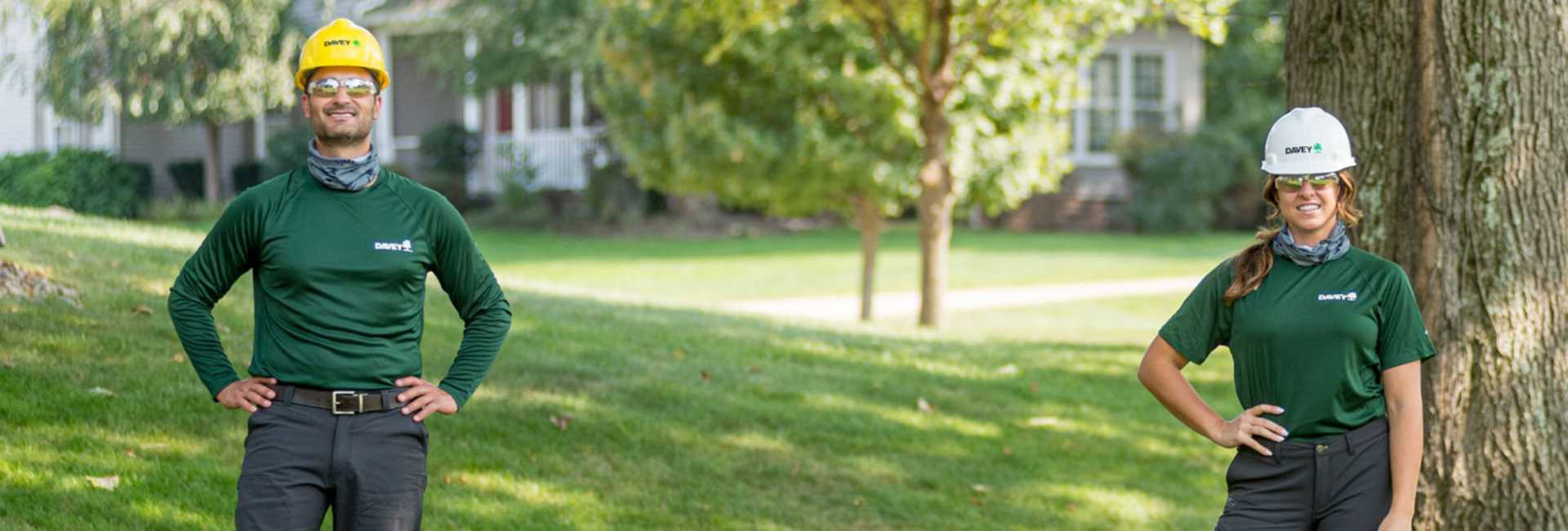Most home landscapes have shrubs.
They improve soil stability, boost air quality, and create habitats for wildlife. On top of that, shrubs can provide beauty to the landscape throughout all seasons.
These small- to medium-sized woody plants can be evergreen or deciduous flowering varieties. They can accent landscape beds, highlight hardscapes, or flank paths or entryways.
But in order for shrubs to provide you with all of these perks, you have to take care of them. Pruning shrubs is an essential step in the shrub maintenance process.
Let’s talk about the benefits of shrub pruning and how to best trim these plants to ensure their long-lasting good health.
What Are The Benefits of Shrub Pruning?
Understanding why shrubs require pruning can help you better address the task in your home landscape.
Shaping - Many times, people trim shrubs for aesthetic purposes. Overgrown shrubs can be unsightly, block views, and bring pests into your home if they grow in contact with the house. Pruning shrubs at the right time of year can enhance their flowering capabilities, change shape, reduce size, and shape their overall form.
Fix That Hollow Look or Improve Sun Exposure - Pruning can improve plant health and survival. This is because trimming can bring sunlight in where it wasn’t before. Also creating space between plants that are too close together.
Increase Longevity - When you trim shrubs properly and during the correct time of season, they may live longer than those you never trim. Pruning shrubs can increase their ability to withstand heavy snow and ice, as well as windy storms. Removing crossing or rubbing branches can increase health and life by letting air and sunlight in.
Encourage New Growth - Pruning shrubs, by nature, promotes new growth. Trimming It can also control growth by cutting back fast-growing shoots.
When Is the Best Time to Prune Shrubs?
Pruning shrubs at the wrong time can be detrimental to their health. For instance, diseases and insects can be spread if you trim a shrub at the wrong time of the year.
Understanding growth habits, bloom time, and the plant’s overall health condition can give you a good sense of the proper time to prune a particular shrub. Different kinds of shrubs have different trimming needs.
Pruning shrubs in spring usually happens after spring-flowering shrubs have finished blooming to ensure you get to enjoy their floral display, but also ensure they have time to create new flower buds for the next spring.
Most other shrubs can be pruned in late winter before growth begins. Pruning shrubs in late summer is typically not a good idea since the resulting late flush of growth may not harden sufficiently before the cold weather sets in.
The Best Time to Trim or Prune Boxwood and other Evergreen Shrubs
Established boxwood shrubs, for instance, require little trimming, unless they have been trained to grow as a formal look. Pruning boxwood shrubs can be done to eliminate stray branches in early spring or during early- to mid-growing season.
Very late winter or very early spring are great times to prune evergreen shrubs since the plants are not actively growing. Avoid fall, since this can make your evergreen shrubs more susceptible to winter injury.
You want to prune spring flowering shrubs, such as lilac, azalea, and forsythia, after they flower. These are the ones that bloom before mid-June. Pruning too early removes the flower buds.
If you are uncertain of your shrub variety or aren’t sure about when to trim it, getting suggestions from a certified, professional arborist can help ensure you prune your shrub at the right times.
How Long to Wait Between Pruning Shrubs
You should never remove an excessive amount of foliage at any one time. And after pruning, shrubs need time to recover. The exception is rejuvenation pruning where some shrub types should be cut back close to the ground in winter. This will encourage healthy, new growth next spring.
You probably notice that some shrubs are best pruned in spring, while others are best pruned in winter, but how often you should trim shrubs might still be a mystery. Annual pruning is best for some, while others may need a bit more to keep them in shape. It’s best to talk to your local arborist about frequency to ensure you’re never over-stressing your shrubs, yet you are giving them the best maintenance to ensure long-term, healthy plants.





